#amphiuma
Text
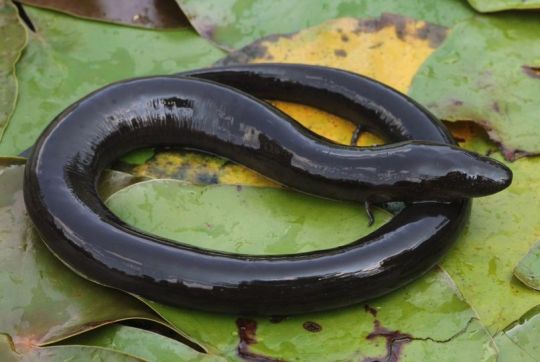
Two-toed Amphiuma (Amphiuma means), family Amphiumidae, Florida, USA
This large eel-like aquatic salamander can grow to length of up to 116 cm (45.7 in).
They do have 4 tiny legs
photograph by Daniel Thompson
657 notes
·
View notes
Text
Animal of the Day!
Three-toed Amphiuma (Amphiuma tridactylum)
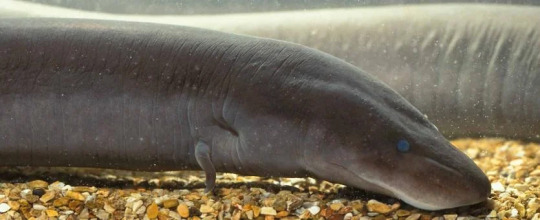
(Photo from the Missouri Department of Conservation)
Conservation Status- Least Concern
Habitat- Gulf Coast Plain
Size (Weight/Length)- 70 cm
Diet- Fish; Worms; Insects; Mollusks; Snakes; Amphibians
Cool Facts- Upon first glance, you might think a three-toed amphiuma is a very large worm or small eel rather than a nearly legless salamander. The salamanders are expert hunters and eat anything that swims. After eating a crayfish, the three-toed amphiuma will take over its burrow to call a home. Their vestigial legs are practically useless as they wiggle through water and mud like an eel rather than attempting to crawl across the bottom of a river. Three-toed amphiuma have recently found their way into the pet trade, resulting in wild individuals being captured and sold. Luckily, their population is relatively stable as long as their rivers remain clean.
Rating- 13/10 (Has the largest red blood cells of any animal.)
#animal of the day#animals#amphibians#salamanders#amphiuma#sunday#january 7#three-toed amphiuma#biology#science#conservation#the more you know
88 notes
·
View notes
Text


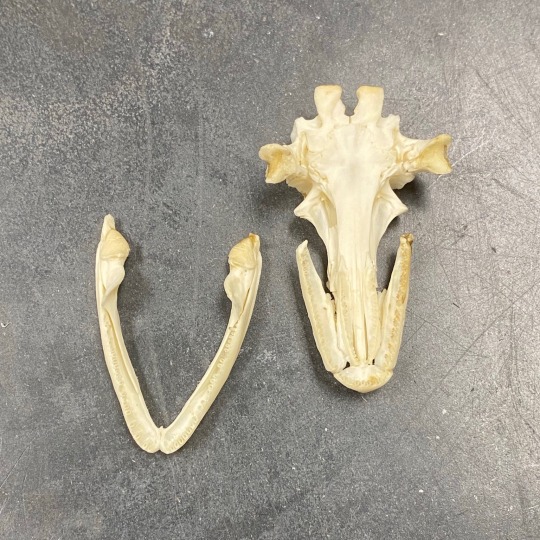
I cleaned this amphiuma skull for my college’s specimen collection. The animal was found dead in the woods by another student and donated.
#amphibian#amphiuma#bone collecting#oddities#odditycollector#vulture culture#salamander#biology academia#biology#stem academia#science academia
67 notes
·
View notes
Text
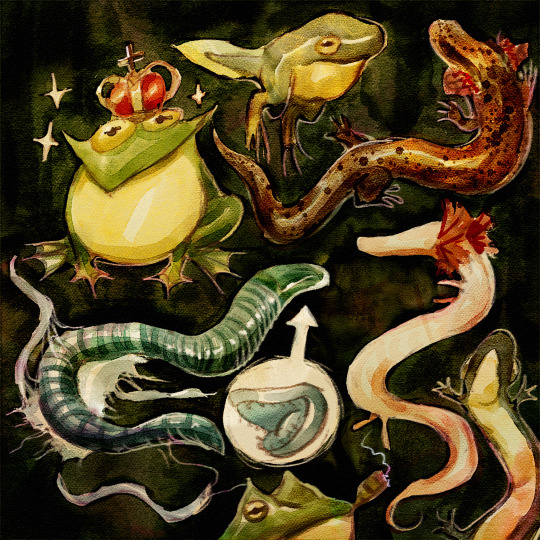
Various Amphibian study buddies. We got Frugs, Caecilian, cave salamander, mudpuppy, and amphiuma.
235 notes
·
View notes
Text
For the July 5th Wet Beast Wednesday I was going to do a 4th of July special where I would cover the "state" fish of Washington DC, the American shad. Unfortunately, the American shad is not a very interesting fish so instead I'm covering the amphiuma. It still kind of counts because they're endemic to the southeastern United States. Amphiumas are salamanders belonging to the genus of the same name. There are three extant species, the three-toed, two-toed, and one-toed amphiuma. Common nicknames for them include conger eels and Congo snakes, both of which are incorrect as they are not snakes, not eels, and not from the Congo. They are notable for their serpentine appearance and almost entirely aquatic lifestyles.

(image: a two-toed amphiuma)
Amphiumas have a very elongated, eel-like body plan. Their limbs are extremely reduced, but have not been fully lost and species can be identified by the number of toes. They live almost their entire lives underwater, though they have been seen crawling out onto land during wet weather such as rainstorms. As many live in seasonal wetlands or other places that can dry out, they have developed the ability to aestivate, a form of hibernation that happens during the summer and conserves moisture. They also secrete a thick and slippery coating of mucus that serves a number of purposes including protection of the skin, keeping the skin wet, and helping escape from predators. Amphiumas can get very large for salamanders, especially the three-toed and two-toed species, which can reach over a meter in length each. The two-toed amphiuma is the longest salamander in North America, though the hellbender still takes the record for the largest. They are primarily carnivores, feeding on small fish, snakes, turtles, amphibians, the occasional mammal, aquatic invertebrates, and occasionally plants. They seem to have a particular taste for crayfish. Interestingly, they have been seen passing up smaller crayfish to focus on larger ones, indicating they can determine when prey will be too insubstantial to be worth the effort of eating it. They can communicate with each other using clicking sounds that are only made in the presence of others.

(image: am amphiuma looking adorable)
They retain a number of juvenile traits including a lateral line. This is an organ system found in fish and amphibians that detects movement of the water and changes in water pressure. Most salamanders only have a lateral line as larvae, but the almost-fully aquatic lifestyle of the amphiuma has led to it retaining the lateral line into adulthood. Unlike some other aquatic salamanders, including the siren, axolotl, and olm, amphiumas do not retain external gills as adults, though they do retain gill arches. While they can respirate through their skin, the amount of oxygen obtained in this manner is not sufficient to keep the amphiuma alive. Amphiumas have extremely large lungs that take up about half of their body length. The group has a unique respiration cycle in which they have to exhale twice to fully empty their lungs and use a combination of mouth and nostril pressurization and smooth muscle groups in the lungs to breathe.

(image: an amphiuma with its mouth open)
Male amphiumas are usually longer and have larger heads than females. While traits like this often indicate male-to-male competition for mates, this has not been observed in amphiumas. In addition, some populations do not have this type of sexual dimorphism. Females are typically the ones to court males. Pair will coil their bodies around each other until their cloacas line up. The male will then transfer a sperm packet into the female's cloaca. Females will pick a secluded area to lay their eggs, up to 200 at a time, in a long strand. The female will coil around her eggs to protect them until they hatch. Females generally mate every other year.

(image: somebody holding an amphiuma)
Amphiumas are not dangerous to humans, though they can deliver a painful bite if disturbed. None of the species are endangered, though the one-toed amphiuma is considered near-threatened and is the leas understood of the species.
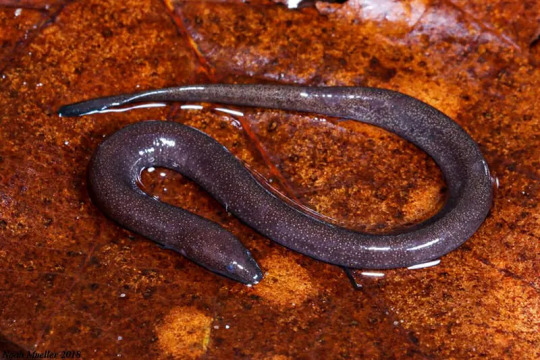
(image: a one-toed amphiuma)
#wet beast wednesday#biology#zoology#ecology#aquatic biology#amphiuma#salamander#animal fact#slimy boi
15 notes
·
View notes
Text

On that note I have a funny gal, it was some oc art I did for shits and giggles. My little take on an attempt to replicate the og covers from the books

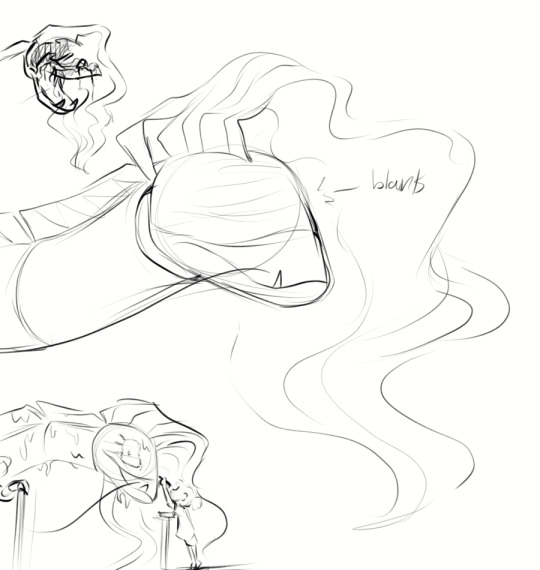
Totally didn’t forget her whiskers nono/hj
Her name’s Mira Blue, she’s a deep sea animatronic funny relating to the water guys from the originals- she’s based off an amphiuma.. search it up it’s the best thing you will ever see all day I promise.
She had a little incident so they replaced her face with a blank panel and turned it into an attraction where children get to draw on her face.. makes her less horrifying to the children and both parties love it
Win win
23 notes
·
View notes
Text

Amphiuma
By: Unknown photographer
From: Encyclopedia of the Animal World
1972
12 notes
·
View notes
Text
Goretober Day 1: Nosebleed

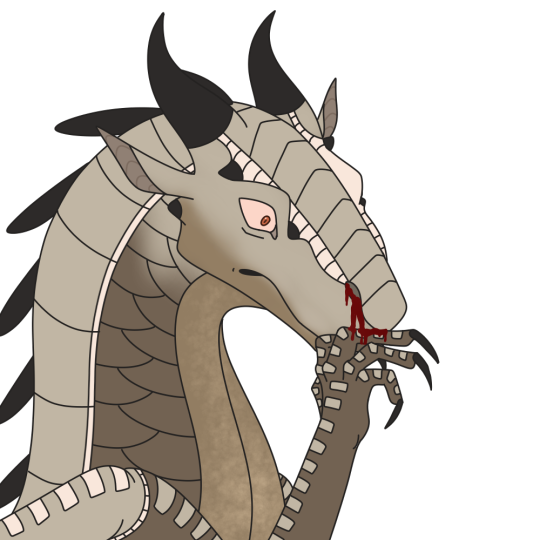
Amphiuma always had the best in life. A Pro-wrestler with plenty of fame. Plenty of dragonesses to be by his side constantly. Tons of gold, silver, and food to fill his greed and his stomach. He was the best at what he did. But, if he was the best, then why did that last blow to his chest really hurt? Why did it make that sound? Why was his nose... bleeding?
Goretober prompts I will be using:
Anemia’s Goretober Prompts

Crisis-Art’s Goretober Prompts

1 note
·
View note
Text
One of my favorite creatures is amphiuma tridactylum because they look like they're flipping you off all the time but they also have a very sweet smile



5K notes
·
View notes
Text
Uncharismatic Fact of the Day
Though they're commonly referred to as conger eels or Congo snakes, members of the family Amphiuma are neither! In fact, they are aquatic salamanders whose legs have, over the course of evolution, been reduced to vestigial limbs. There are currently three recognised species: the one-toed, two-toed, and three-toad amphiuma.

(Image: A two-toed amphiuma (Amphiuma means) by Jake Scott)
If you like what I do, consider leaving a tip or buying me a ko-fi!
185 notes
·
View notes
Text
Alrighty then, today's Amphibuary, courtesy of @amphibianaday! Today's prompt was salamander, and I'd heard of these odd fellows called amphiumas, so I went ahead and drew one of them

And then my mother here drew the oldest known salamander fossil, at 230 million years old. Almost as old as her!

#please imagine my post with a rich southern drawl#i have no idea why i wrote it like that but i did#just came to me ig#there are 3 subspecies of amphiuma and mine is no paticular one#i think the coloring on it came out well#you can really see the pinkish undertones
67 notes
·
View notes
Text

Three-toed Amphiuma (Amphiuma tridactylum), family Amphiumidae, found in the SE United States
Amphiumas are large eel-like aquatic salamanders. The three-toed can grow up to 41 inches long. It has 4 tiny legs with 3 toes on each limb.
photograph by OpenCage.info
293 notes
·
View notes
Text
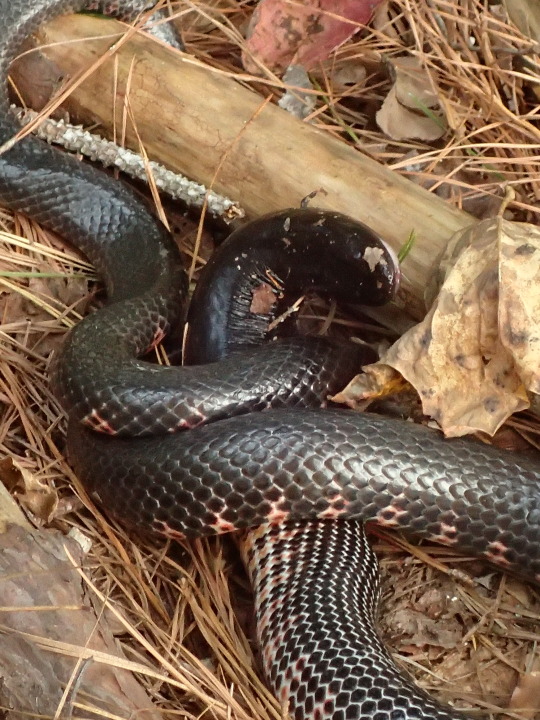
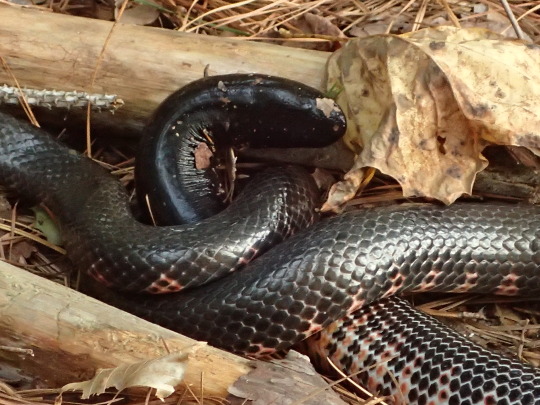
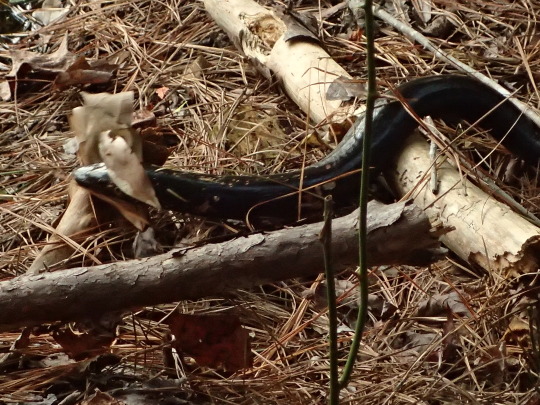
A couple months ago I posted about seeing a snake trying to eat an eel down by the swamp. Looking at the pics I seem to have been wrong about an essential point.
It was NOT an eel but a two-toed amphiuma, a kind of salamander apparently! You can see a “toe” in the top two photos.
Learn something new every day..
The critter escaped the snake, BTW.
#animals#wildlife#wildlife photography#snakes#salamander#photography#photographers on tumblr#original photography#nature#nature photography#woods#my woods#my pics#amphibian#reptile#two toed amphiuma
15 notes
·
View notes
Text

Lady (me) with an amphiuma
#at first there was no amphiuma but i wanted to give me something to hold#could be a snake but a snake is harder ro draw#besides amhiumas are cool#this one lacks its little feet though...#these days are quite ok but im still very annoyed with people#esp in publuc transport#since the tags are like a diary ill use this as an excuse to brag here as well:#there was a students' scientific conference and my report got first place in one of the sections
4 notes
·
View notes
Text
What Is and Isn't a Fish: a List
A list of the animals I discussed in my fish essay, but for those who don't want to scroll through paragraphs of text to find out if an animal is or isn't a fish. Just CTRL+F your way through here!
I'll add onto here more animals whenever I get asked about them being fish. See my fish essay here!
Some notes before you proceed:
Yes, all tetrapods are fish! We are phylogenetically fish, as we are and our ancestors were lobe-finned fish! "Fish" in the phylogenetic sense is a paraphyletic group if you try to exclude tetrapods, so it is frankly impossible.
How come tetrapods aren't listed as fish then? Long answer, read my essay. Short answer, me and other fish accounts tend to operate on the morphological definition of fish, so does most of the world. Here I use the morphological definition of "fish".
Fish:
Jawless fish
Hagfish
Lamprey
Cartilaginous fish
Sharks
Dogfish
Whale shark
Chimaeras/Chimeras/Ghost sharks
Ratfish
Ray
Stingray
Skate
Ray-finned fish
Teleosts
Catfish
Eels
Moray eel
Seahorse
Sea dragon
Lobe-finned fish
Coelacanth
Lungfish
Not Fish:
Crustaceans
Krill
Shrimp
Crab
Crayfish/Crawfish/Crawdad
Lobster
Spiny lobster
Triops
Mantis shrimp
Barnacle
Isopod
Copepod
Shellfish
Mollusks/Molluscs
Gastropods
Sea snail
Sea slug
Snails and slugs in general
Sea angel
Sea hare
Sea bunny
Cephalopods
Octopus
Squid
Cuttlefish
Nautilus
Inkfish
Bivalves
Clam
Mussel
Scallop
Oyster
Chiton
Chelicerates
Horseshoe crab
Sea spider
Water mite
Diving bell spider
Cnidarians
Jellyfish/Sea jelly/Jelly
Coral
Sea anemone/Anemone
Siphonophores
Portugese man o' war
Echinoderms
Sea cucumber
Sea pig
Feather star
Sand dollar
Sea biscuit
Sea cookie
Brittle star/Serpent star
Sea urchin
Starfish/Sea star
Comb jelly
Lancelet
Tunicates
Sea squirt
Salp
Annelids
Bristle worm
Bobbit worm
Spoon worm
Giant tube worm
Bone-eating worm
Sea mouse/Sea mice
Feather duster worm
Christmas tree worm
Leech
Flatworm
Amphibians
Salamander
Amphiuma
Mudpuppy/Mud puppy
Waterdog
Olm
Axolotl
Siren
Frog
Toad
Tadpole
Caecilian
Reptiles
Sea snake
Water snake
Snakes in general
Sea krait
Turtle
Snapping turtle
Softshell turtle
Sea turtle
Terrapin
Marine iguana
Crocodilian
Crocodile
Alligator
Caiman
Gharial
Bird
Penguin
Seagull
Loon
Swan
Mammals
Whale
Orca
Baleen whale
Toothed whale
Dolphin
River dolphin
Porpoise
Narwhal
Beluga whale
Sperm whale
Pinniped
Seal
Sea lion
Leopard seal
Elephant seal
Walrus
Sirenian
Manatee
Sea cow
Dugong
Otter
Sea otter
Beaver
Hippo
Platypus
Muskrat
Water shrew
323 notes
·
View notes
Note
What can you tell about eastern mud snakes? Out of no reason other than curiosity. They have neat patterns, and I want to know more about them!
Aren't they just so cool? They're native to where I live and every time I see them it is a delight.
Mud snakes (Farancia abacura) are super cool semiaquatic colubrids. They typically have striking black-and-red underbellies, and they'll flip over to try and shock predators with it.

If you look at the tip of a mud snake's tail, you'll notice it ends in a sharp point! They rarely bite but they will try to stab you with that.
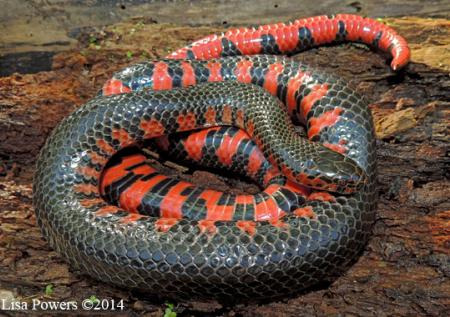
Doesn't hurt but it can shock if you're not expecting it.

Individuals and populations vary on how far the red patterning extends! Some will only have it on their bellies, and on some it'll extend onto their faces and backs.



They're calld mud snakes because they live next to water and bury themselves in mud, rarely ever coming out. They will eat any amphibians in a pinch, but their absolute favorite foods are giant aquatic salamaders, especially amphiumas.
Fun fact about mud snakes: folklore surrounding them is a potential origin of the "hoop snake" myth, because across their range there's a common myth that they will bite their tails to form a hoop and roll after people! (Obviously, they don't really do that.)
Mud snakes are so cool, and so beautiful!

281 notes
·
View notes